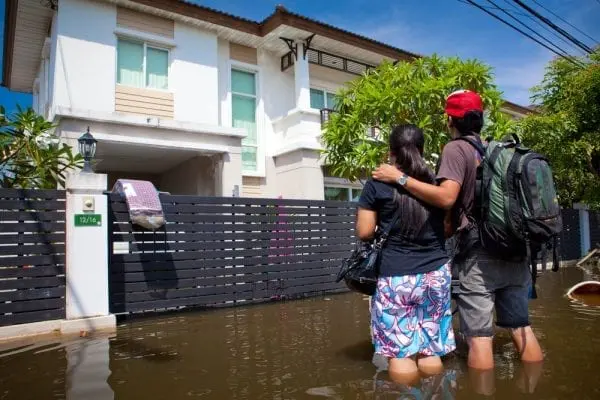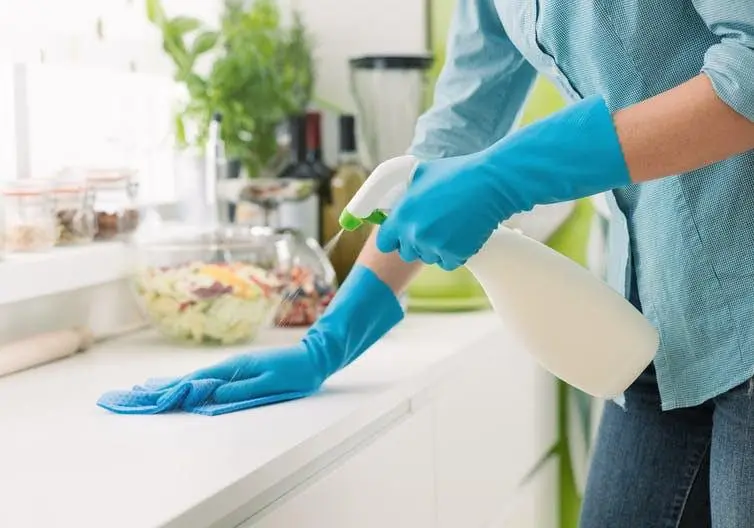Recovering After a Flood

Due to climate change, severe weather events are increasing in frequency and intensity, as reported by The Guardian. If your area has experienced flooding recently, you are familiar with the amount of devastation water can do. However, even if the water has receded and the immediate danger has passed, you’re not out of the proverbial woods yet. In fact, recovering after a flood and getting your life back on track is going to prove a daunting task.
So, what are the steps you need to take immediately after the flood, as well as in the following days and months? The EPA offers an extensive guideline on how to deal with floods and their aftermath. However, when you’re in dire straits, you may need simpler and more concise instructions on what to do. This article aims to simplify and order useful information and make it easier to process and follow to aid in recovering after a flood.
Immediately After the Flood
Make sure that the danger has really passed. You need to stay safe if you plan to help your family and yourself. Make sure you have a reliable and uncontaminated source of water, as well as enough food. Most often, there are government relief funds and efforts which will ensure that you have enough of both. Still, the area is full of water and that is not a safe place for young children, old and sick people. Ideally, they should be away from the immediate aftermath of the flood. Everyone else needs to take extra precautions. Wash your hands with soap and water as often as you can.
Assess the Damage in Your Home
Once you are sure that it is safe to return to your house, the first thing you need to do in recovering after a flood is disconnect the electricity, water, and other utilities, according to the water damage restoration experts at KIC Restoration Inc. of San Diego. Once the restoration process is done, you will be able to reconnect them without any problem. Once it is safe to enter, the first thing you want to do is get the air circulating. Open all the doors and windows. This has a twofold purpose. It will let you breathe easier and prevent any further damage from the moist air. See if you can salvage anything from your home. You also need to check any damage that may occur in your basement. You also need to check any damage that may occur in your basement. Before a flood occurs you might want to search online for Basement Waterproofing Kingston, or whichever location is relevant, and look for a professional who can waterproof the basement and help to prevent such damage.
First Aid
You can start by removing all the ruined furniture and other property, as well as the debris. This will further help you assess the true state of your property, your floors in particular. Check the condition of the pipes in and around your house, to make sure you are able to reconnect to all the utilities once the normal regime returns. Patching up any structural damage in your walls and roof should prevent any additional damage from potential rainfall and should be done fairly early on as well.
Removing the Moisture
Residual water and general dampness of the air have a detrimental effect on your home in more than one way. Wood in your walls is likely to warp, swell or even rot away if left in contact with water for too long. Similarly, the damp air promotes the growth of mold and mildew. You need to do everything you can to dry out your home. Opening all doors and windows is a good start, but you may need to use some machinery, like fans or dehumidifiers. You can also use some chemicals, such as desiccants. Don’t forget that you need to dry off the walls and ceilings as well as the floors.
Legal Challenges
All the while you are doing your best to reclaim your house and resume a normal life, you will have to deal with the paperwork as well. Contact your insurance to find out if you are entitled to some compensation and what paperwork you may need to submit. Contact your mortgage holder to see your options with regards to financing. If you feel like you need financial aid, try accessing federal disaster relief funds.
Cleanup
Prior to any rebuilding works, you will have to clean up thoroughly. The debris, mud, and silt are your primary problem, but every surface of your house needs to be cleaned and dried. Make sure you have plenty of washing supplies, such as detergents, sponges, mops, and buckets. To be safe, wear rubber gloves at all times. The American Red Cross often provides these cleanup kits in the affected regions as a way of ensuring that the cleanup is quick and thorough.
Mold
During the cleanup, you will be in an ideal position to inspect your home for mold growth. Any suspicious place should be inspected for signs of mold growth. If you’re uncomfortable doing this yourself, contact a mold inspection expert.
How to Rebuild?
The general consensus among the rebuilders and remodelers, the best thing you can do is cover one room at a time. The kitchen is the best place to start since kitchens have a central role in a modern household. Once you have reclaimed your kitchen, you have a place to eat and, more importantly, access to running water. If you are using diesel generators, keep in mind that the exhaust fumes are highly toxic. Ideally, you should keep the generator outside. You can gradually rebuild and renovate all the rooms if your house is structurally sound.
Safety
Some tasks are simply too difficult for an amateur to do by himself. That is when you call in the experts. Remodeling businesses exist all around the country, so you shouldn’t have any difficulty finding a contractor. However, there are some important things you should consider when hiring a contractor. What you are looking for is a reliable partner, so references are important. Some contractors might be tempted to overcharge you since you are in need of urgent help. That’s why you should get quotes from at least 4 different contractors. You will get a general idea of the costs and the scale of work which need to be done. A good contractor will have insurance and not expect all of the money to be paid upfront, so be wary of such business practices.
The Human Factor
Your home may be rebuilt, but your life can be a whole different matter. A much bigger issue than losing the house is the loss of small personal items, such as collectibles or family photos. There are instances of people developing PTSD or depression from such events and not being able to return to normal life without help from professionals. If you or anyone in your family are suffering from these kinds of issues, seek professional help so you can return to normal life as soon as possible.
After the Flood
With severe weather on the rise, people and communities are attempting to protect themselves. There are systems in place which people use to protect themselves from floods. Communities that have experienced flooding are investing heavily in drainage, dams, and levees. Personally, you can help yourself by being prepared for such an event. Creating a checklist of what you should do is a good start. Consult the experts at EPA to learn more about flood preparedness. You can also invest in flood insurance and emergency kits with food and sanitation supplies and keep them handy.
These terrifying events create all kinds of devastation in their wake, but the human resilience and resourcefulness are impressive










Keeping up-to-date pictures is a great way to make sure you fully recover from flood damage. Thanks for writing!